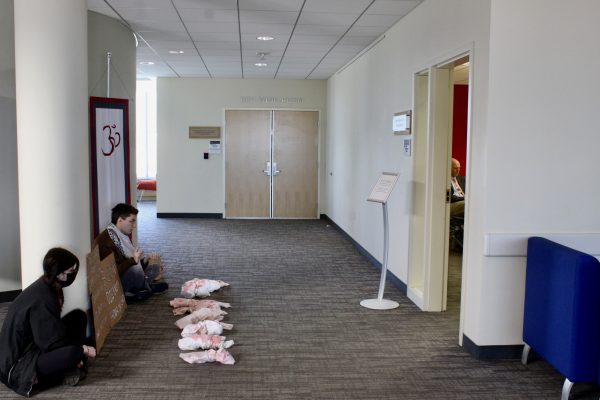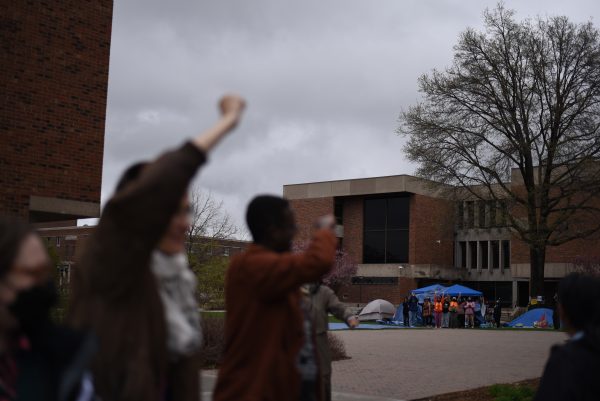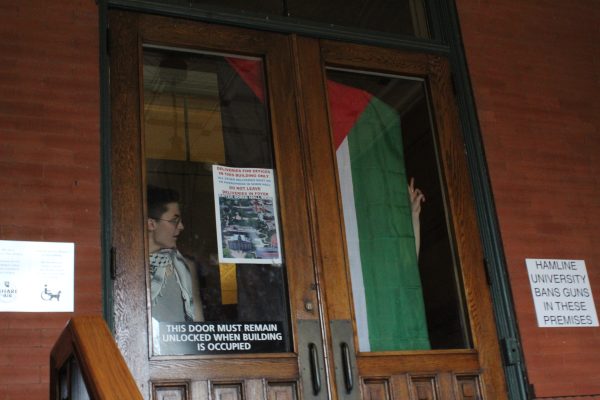20-year plan revision in the works
Hamline leadership working to plan for additional useable areas.
November 13, 2015
Long-term goals have driven Hamline’s vision for expansion in recent years. 5-year and 20-year plans have been written and discarded and now little is known of the future of Hamline’s campus.
In 2008, a 20-year plan developed by then-President Linda Hanson and the Hamline Board of Trustees was radical to say the least. It would have seen wide-ranging changes all over Hamline including the refurbishment of Drew Hall, Bush Center and Giddens Learning Center, and the demolishment of Sorin Hall, Drew Science Center, the Super America gas station and the Heights.
Since that 2008 20-year master plan was put into effect, Hamline has run into controversy with its plans to expand further into the neighborhood around Hamline. Several small but vocal groups have made themselves heard to Hamline leadership but have made little progress in halting the demolishment of houses owned by Hamline. The current administration promises to hear them out, and President Fayneese Miller said as much in the recent meeting with these groups in the Hamline United Methodist Church.
“Hamline sees itself as a good neighbor and it intends to remain a good neighbor,” said Miller.
Since the 2008 20-year plan was released, it has gone through several updates, culminating in the 2014 20-year master plan update. Little was changed from the 2008 plan except for adding the school of business to the East Hall building, the adding of Anderson Center to the map and a 30-car reduction in the number of parking spaces in one proposed parking lot. There would still be expansions out to Minnehaha and likely a large amount of protest would follow.
Recent developments have put any plans to expand Hamline’s campus beyond its current limits on hold.
“Three things have happened recently which have produced a certain amount of empty space,” said Dean of Students Alan Sickbert. “One, Sorin Hall where the dining hall used to be is still empty. Two, the library is preparing to make changes to become a warehouse of learning. Three, the school of law is moving the majority of its classes to William Mitchell which opens up a certain amount of space on campus.”
These openings combined with the decreasing usage of the facilities in Bush Center has left Hamline with a certain amount of room to utilize that was not accounted for in the 2014 master plan update, and as such a committee has been organized to write an entirely new plan to account for the additional space as well as the increasingly vocal protests.
“What’s in motion now is that there have been measurements of all the space on campus, every room, everything,” said Sickbert. “There will be a process where this committee can bring inputs from around campus into developing a new master plan.”
This new master plan, according to Sickbert, may or may not involve many of the radical destructions or constructions included in the 2008 and 2014 plans depending on what space is available to use.
“The idea now for the master plan committee is to look at the space we have, the needs we have, and how best we can meet the needs of space on campus,” said Sickbert.
Eric Yeakel, president of the Hamline Undergraduate Student Congress, will be the leading voice for Hamline’s students in this committee. Yeakel has little information on the progress of the committee to date, as the committee has yet to meet for the first time.
“We have had several delays about getting everyone together,” Yeakel said. “I wasn’t informed about the time of one meeting, another was cancelled, and only recently have we finally set the evening of Nov. 11 as our first meeting time.”
Both Miller and Sickbert have stressed patience in the decision making of the committee, and it appears as though the committee will be taking until late in the spring semester to announce a new plan. This committee has the potential to shape the Hamline campus for the next two or three generations of students, so if you, the reader, wish to learn more about these committees, contact HUSC or the faculty leader of the committee, Lowell Bromander, by email. Updates on the committee and the use of spacing will be forthcoming from The Oracle when they are made public.





